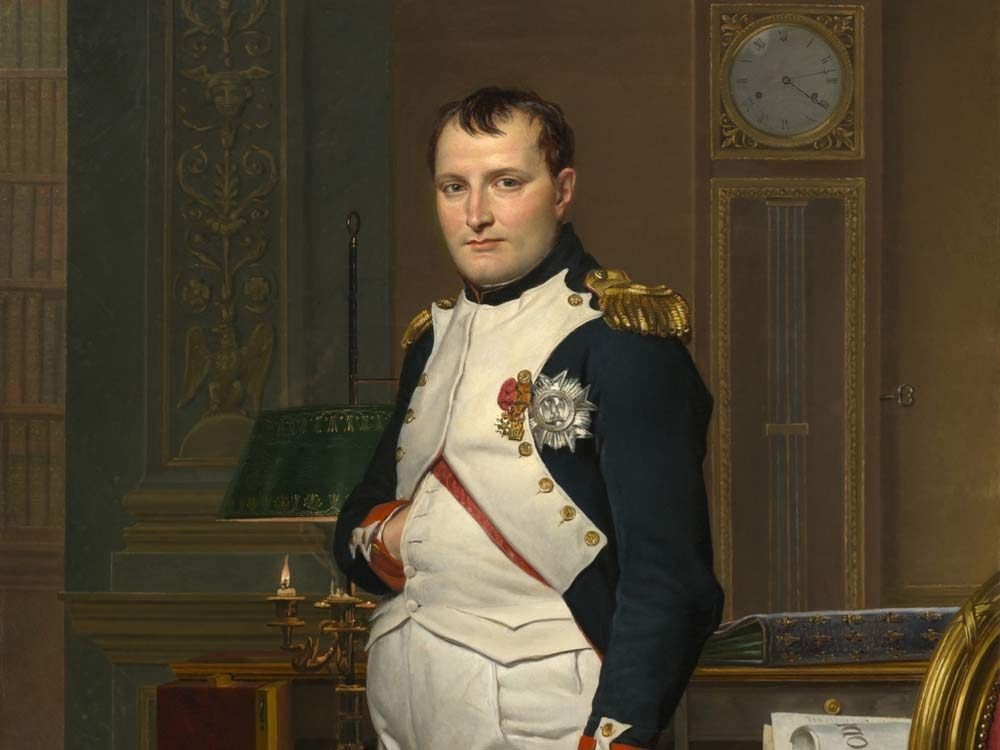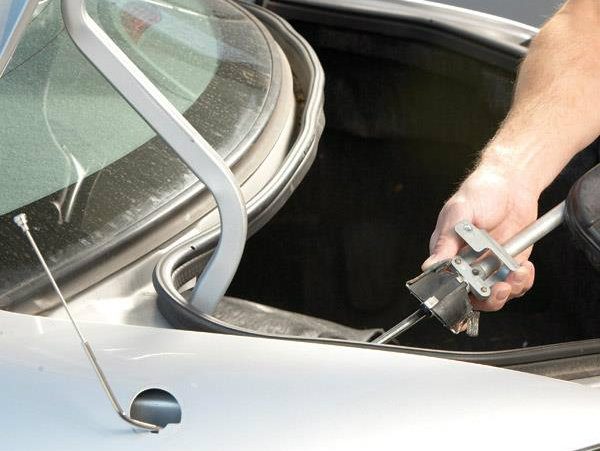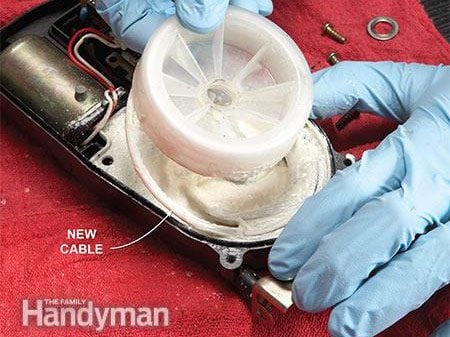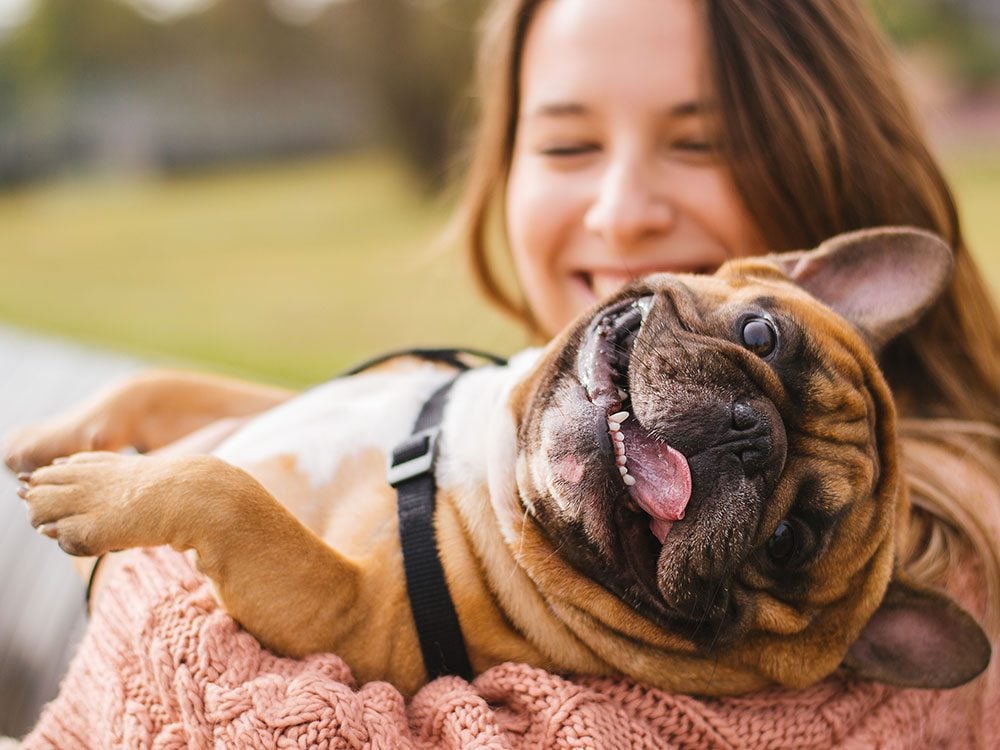
Why your brain hates exercise
When it comes to exercise, many of us spend more time explaining why we don’t have time than actually lacing up our shoes and heading out the door. According to the Heart and Stroke Foundation of Canada, we only need 150 minutes of moderate exercise each week, yet most of us don’t reach that goal. Why? The reason may be that we’re hard-wired to be lazy, despite our best intentions. (Here are 50 ways to lose weight without a lick of exercise.)
In a new study in the journal Neuropsychologia, University of British Columbia postdoctoral researcher Matthieu Boisgontier, PhD, recruited 29 participants and asked them to look at images of either physical activity or physical inactivity while wearing electrodes that registered their brain activity. The participants were asked to move their on-screen avatars as quickly as they could toward the active pictures and away from the inactive images in one test, and then away from the active photos and toward the inactive ones.
Boisgontier and colleagues found that volunteers moved faster toward physically active pictures than toward the inactive images. The participants, however, also used far more brain activity while moving their avatars away from the inactive images than moving toward them. In other words, the brain worked harder to get away from the sedentary image.
Why do our brains work harder when just considering exercise? The reason may date back to survival instincts. Conserving our physical energy “has been essential for humans’ survival, as it allowed us to be more efficient in searching for food and shelter, competing for sexual partners, and avoiding predators,” Boisgontier explained to Medical News Today. “These results suggest that our brain is innately attracted to sedentary behaviors,” he adds.
The secret to moving more could be as simple as tricking your brain into wanting to work out. In a paper in Current Sports Medicine Reports, author Daniel E. Lieberman, PhD, explains that because our natural inclination is to be lazy, simply telling yourself to exercise more won’t work—you need enticement. The solution is to make your exercise feel more like play; choose something that doesn’t feel like exercise and you’re more likely to do it. (Check out the 15 best workouts for people who hate to exercise.)
Another strategy is to intentionally build more activity into your everyday routine. Get started by finding out which household items are fitness equipment in disguise.

What age are you the most confident?
In our youth-obsessed culture, one would assume that your self-esteem peaks in your 20s—but that’s not the case. Researchers from the University of Bern in Switzerland set out to determine when the average person’s self-esteem is the highest, and the good news is that your peak comes decades later.
The study, published in in the journal Psychological Bulletin, analyzed 191 self-esteem research articles covering over 165,000 people. Researchers found that self-esteem increases throughout one’s lifetime, with a slight plateau during those awkward teen years. Between ages 11 to 15, self-esteem stops rising—but it never drops. (Check out these surefire ways to boost self-esteem, according to science.)
Our self-esteem levels then start rising again and don’t peak until well into midlife. The highest point for self-esteem level happened at age 60 and stayed there until a slight decline in one’s 70s and 80s.
This news that our self-esteem will continue to rise or stay steady during the majority of our lives is exciting. We often hear of increased stress in the decades of raising teens and caring for aging parents, but there are upsides too. “Midlife is, for many adults, a time of highly stable life circumstances in domains such as relationships and work. Moreover, during middle adulthood, most individuals further invest in the social roles they hold, which might promote their self-esteem,” study co-author Ulrich Orth, a professor of psychology at the University of Bern in Switzerland, told Time. “For example, people take on managerial roles at work, maintain a satisfying relationship with their spouse or partner, and help their children to become responsible and independent adults.” (Check out these eight ways to embrace your next milestone birthday.)
As we age and our roles tend to change, it’s natural for self-esteem to take a small hit. “Old age frequently involves loss of social roles as a result of retirement, the empty nest, and, possibly, widowhood, all of which are factors that may threaten self-esteem,” Dr. Orth told Time. “In addition, aging often leads to negative changes in other possible sources of self-esteem, such as socioeconomic status, cognitive abilities, and health.”
While the thought of decreasing self-esteem in old age sounds depressing, it’s important to remember that it is only a slight decrease. Dr. Orth believes that most people maintain a high self-esteem level even into their 90s and beyond.
Boost your confidence with these expert-approved strategies.

The story behind the “hand-in-waistcoat” pose
If you peruse portraits and photographs of notable men from the 18th and 19th centuries, you might notice that many of them sport the same fairly unnatural-looking pose. They sit or stand while keeping one hand tucked into the front of their jackets. They look like they’re trying to appear stately for the picture while also trying to keep the painter from pick-pocketing their wallet. With depictions of everyone from Napoleon to Joseph Stalin using the gesture, historians and curious art aficionados have puzzled over its meaning. (Here are 10 historical figures you’ve been picturing all wrong.)
No, it’s not a secret Masonic code or a reference to an Illuminati ritual. The tradition actually dates back long before the 1700s. According to Today I Found Out, some societal circles in ancient Greece considered it disrespectful to speak with your hands outside of your clothing. Statuary from the sixth century BC, therefore, showed celebrated orators such as Solon with their hands tucked into their cloaks.
Little did the ancient Greeks know that their legacy would carry on a whopping 24 centuries later. In the 18th century, artists began looking to antiquity for inspiration. What did they find but statues of celebrated speakers, posed with their hands in their cloaks. Portraitists began representing subjects in a similar pose, believing that it conveyed a noble, calm comportment and good breeding.
One of the most recognizable historical figures to be depicted in this pose was Napoleon Bonaparte himself. Several portraits of the French emperor show him with one hand in his jacket, leading theorists to wonder if he was clutching a painful stomach ulcer. One painter, Thomas Hudson, painted so many men in this pose that his contemporaries wondered if he simply wasn’t good at painting hands.
With the advent of photography in the early 19th century, the trend continued. Major historical figures—everyone from U.S. president Franklin Pierce to Communist Manifesto author Karl Marx—were photographed with unbuttoned jackets and hidden hands. It wasn’t until the end of the 1800s that the pose’s prevalence began to decline. But, even after that, it popped up in photographs every now and then; Joseph Stalin adopted the stance in a 1948 photo.
Next, check out these 14 mind-blowing facts about selfies.

This is the difference between a princess and a duchess
If Disney movies taught us anything, it’s that when you marry a prince, you become a princess. So it was a bit of a shock that when Kate Middleton and Meghan Markle married into the royal family, we were all expected to call them duchesses. Obviously, Princess Kate and Princess Meghan sound much better. That got us thinking, how do you become a princess, anyway? And what makes them different from duchesses? (Learn about the 1969 documentary the royal family doesn’t want you to see.)
It turns out, there are two ways to become a British princess: to be born the daughter of a prince (which is why Princess Charlotte’s children won’t have royal status), or to marry one. On top of that, only those born into the royal family can use the title princess (or prince, for that matter) before their name.
It’s confusing, because while Kate Middleton is not Princess Kate—her title is Catherine, Duchess of Cambridge—she is a princess. On her wedding day, she took on her husband’s title, making her Princess William of Wales, in addition to Her Royal Highness, Duchess of Cambridge. Prince George’s birth certificate also lists her official occupation as Princess of the United Kingdom. Similarly, Meghan, Duchess of Sussex, could be called Princess Henry of Wales.
This is also the reason why Prince Andrew’s daughters Beatrice and Eugenie are princesses, but the daughter of Princess Anne, Zara Phillips, is not. A child’s parents can also decide against bestowing the title upon their children, which is why Prince Edward’s daughter, Louise Windsor, is a lady instead of a princess. The BBC writes that Prince Edward and his wife decided against the title. (Here are 10 unusual royal traditions you’ve never heard of.)
After the royal titles of king, queen, prince and princess come the five noble ranks: duke and duchess (the members of nobility that rank right below the monarch), marquess and marchioness, earl and countess, viscount and viscountess, and baron and baroness. These nobles are referred to as lords and ladies (the exception being dukes and duchesses, who are referred to as “Your Grace”), according to Merriam-Webster. Princes and princesses often hold dukedoms.
Of course, the Queen has free reign over all of this. “The monarch may offer to bestow a royal title upon his or her daughter’s children,” says Lucy Hume, associate director of Debrett’s, to Town and Country. “For Peter and Zara Phillips, the Queen offered to give them a royal title when they were born, but Princess Anne and Captain Mark Phillips opted to decline this offer.”
That said, befriending the Queen isn’t likely to lead to being named a princess—although there’s got to be a first for everything!
Next, here are 50 things you didn’t know about the British royal family.
Fixing a Broken Power Antenna: Step-by-Step Instructions For the Home Mechanic
If your power radio antenna won’t go up and down anymore, the problem is either a burned-out motor or the geared cable inside the mast. Both are easy DIY fixes. You can do the entire repair in about two hours. The parts run about $25 for a new cable/mast, plus the cost of the special wrench. Or, pick up a complete junkyard unit for about $75 (that’s half the price of a new antenna).
Tools and materials needed to fix a broken power antenna:
– Socket/ratchet set
– 4-in-1 screwdriver
– Side cutter
– Nut driver
– Replacement mast kit
– Degreaser
– Lithium grease, spray can
– Plastic gloves
First, make sure the motor works. Have a friend turn on the radio and listen for motor noise coming from the antenna area. If it makes noise, it’s a candidate for repair. If not, you’ll have to replace it using the steps we show. Next, order a replacement mast kit. The kit includes a new geared nylon cable connected to new antenna sections.

You’ll also need a special wrench to remove the bezel nut (above). DON’T use pliers; you’ll scratch the bezel and the paint. Check an auto parts store for one.

Unscrew the bezel and remove the antenna retaining bolts (above). If your antenna is mounted inside the front fender, remove the wheel-well liner by pulling out the plastic rivets and push-in retainers.

Next disconnect the power and coaxial cable connectors and remove the entire unit from the vehicle (above). If your antenna doesn’t have a removable coaxial connector, disconnect the power connectors and perform the mast replacement while the unit is still connected to the coaxial cable.

Remove the cover screws from the antenna. Then lift the cover and note the location of the gears, cable spool, washers and idler roller before you remove them. Next, remove old mast. Thread the nylon cable and mast into the spool and reinsert the gears and rollers (above). Spray all the moving parts with lithium grease. Reinstall the cover, then plug in the antenna and reinstall it in the fender or trunk.
Next up, learn:
- How to repair chipped, scratched and flaking car paint
- How to change the wiper blades on your car
- How to do an oil change
- How to replace a fuel pump
- How to replace spark plugs

Our Canada Share Your Canada Photo Contest 2020-2021 winners
Our Canada Share Your Canada Photo Contest 2019-2020 winners
Our Canada Survey Prize Draw Aug 2019 winners
Spot the Loonie 2018-2019 winners
Our Canada Share Your Canada Photo Contest 2018_winners
Spot the Loonie 2017-2018 winners
Our Canada Survey Prize Draw Feb March 2018 winners
OC Share Your Canada Photo Contest (2017) winners
Our Canada Spot the Loonie 2016-2017 winners
OC Share Your Canada Photo Contest (2016) winners
OC Spot The Loonie (2015-2016) winners
OC Spot the Loonie (2014-2015) winners
OC Celebrate Canada Photo Contest (2014) winners
OC Spot The Loonie (2013-2014) winners
OC Special Moments Photo Contest (Aug 2013) winner
OC Special Moments Photo Contest (Apr 2013) winner
OC Special Moments Photo Contest (Jan 2013) winner
OC Spot the Loonie (2012-2013) winners
OC Summer fun Photo Contest (2012) winners
OC Fiction and Poetry contest (2012) winners
OC Spot the Loonie (2011-2012) winners
OC Spot the Royals Photo contest (2011) winners
OC Savour the Flavours of Canada Recipe Contest (2011) winners
OC Photo of the Year Contest (2011) winners
OC Spot The Loonie (2010-2011) winners
OC Hockey Stories Contest (2010) winners
OC Celebrating Canada Photo Contest (2010) winners

Why dogs spin around before they poop
Most dog owners have probably been puzzled (and possibly impatient) waiting for their dog to do its business. Instead of just finding a soft area of grass to go number two, they make a whole ritual out of it, spinning in a circle before finally squatting. Luckily, the ultimate pet owners’ question may finally have been answered.
A few theories have circulated about why dogs might circle before pooping, and most are similar to the reasons they spin before lying down. Trampling around in a circle would flatten the grass around, which would keep tall blades from trapping their waste and hitting their tushes while they poop (yuck). Another explanation could be that they’re scanning for snakes and predators before they become completely occupied.
But Czech researcher Hynek Burda didn’t quite buy into those theories. Dogs evolved from wolves, which didn’t need to worry much about tall grass. And if they were scanning their environment, keeping still to listen and sniff would be more effective than giving the area a quick once-over. Instead, Burda suggested that dogs spin to get a feel for the Earth’s magnetic pull. (Here are 16 more ways your dog is smarter than you think.)
The Earth has a magnetic field around it protecting it from radiation from space, and some animals seem to use it to get a sense of where its North and South poles are. For instance, it’s how birds know which way to migrate. In 2013, Burda published a study in the journal Frontiers in Zoology suggesting dogs have a strong internal compass, too. He and his team spent two years watching 70 dogs poop and pee and recording which way they faced and how strong the magnetic field was.
As it turns out, when the magnetic field was calm (which it is about 20 per cent of the time when it’s light out), dogs preferred to poop facing either north or south. When the magnetic field was less stable, they faced any way. The pattern couldn’t explain why dogs like facing the Earth’s poles, but the researchers think it might help them remember where they marked their territory. “Doing so, and/or calibrating his magnetic compass, is probably easier for him when being aligned with the magnetic field,” Burda told the Washington Post.
If they can remember which way they were facing, they might find it easier to find that spot again. So before you roll your eyes when your dog takes ages to do his business, remember that Fido might just be getting scientific about his potty spot.
For more weird dog habits, check out the 10 secrets your dog’s tail is trying to tell you.

Per Capita, This City Spends More on Pets Than Anywhere Else in Canada
We Canadians love to pamper our pets—but some fur babies have it better than others, according to a new report from Amazon.ca. The online retailer just released its annual list of the Canadian cities that spend the most on pet products per capita, and the results shed light on which parts of the country spare no expense on their four-legged friends.
For the first time ever, London, Ontario, is ranked the Pet-Pampering Capital of Canada, bumping Vancouver from top spot. London has been steadily rising through the ranks since 2016, climbing from 7th to 4th before claiming the crown. Vancouver is still a pet-loving city, but dropped from first place in 2017 down to 3rd. Calgary has made the move to 2nd place, taking the spot from another Alberta city, Edmonton, which dropped 11 places to number 13.
The top 20 cities in Canada for pet-pampering are:
- London, ON
- Calgary, AB
- Vancouver, BC
- Kitchener, ON
- Saskatoon, SK
- Mississauga, ON
- Gatineau, QC
- Burnaby, BC
- Windsor, ON
- Regina, SK
- Richmond, BC
- Winnipeg, MB
- Edmonton, AB
- Markham, ON
- Ottawa, ON
- Brampton, ON
- Surrey, BC
- Hamilton, ON
- Toronto, ON
- Laval, QC
The Amazon spending report also revealed:
The Canadian City With the Most Spoiled Pups:
Saskatoon, Kitchener and Gatineau, respectively, are the top cities that pamper their pups, buying the most accessories, grooming products, toys and treats. (Saskatoon is also great at spoiling foodies—here’s why!)
The Canadian City With the Most Stylish Kitties:
There is a direct connection between size of a city and purchases on cat accessories. Torontonians purchased more feline fashion than any other city, but stylish cats in Calgary and Edmonton closely follow. (Speaking of which, here’s some inspiration for your pet’s Halloween costume.)
Our Fish Fascination:
Across the country, land-locked cities are more likely to spoil their fish with popular purchases like aquarium décor, food, heaters, lights and more. London, Mississauga, Ottawa, Winnipeg and Brampton take the top five spots for fancy fish.
Next, check out what six dog breeds looked like 100 years ago!